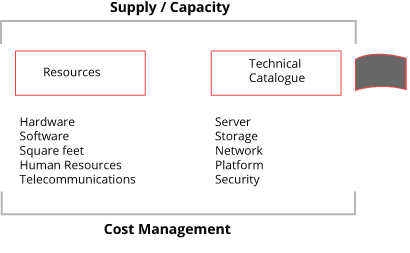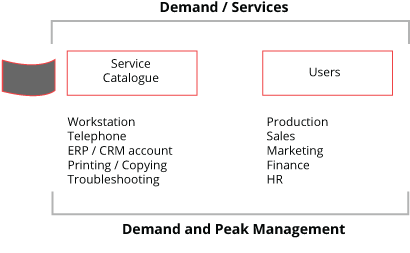Improve your IT financial management
DECIMAL Expert
A good IT costing system is a valuable tool for effective budgeting and IT costs optimization.
Although funds allocated to IT often represent a significant portion of an organization’s expenses, calculating and explaining their cost remains problematic. All too often the resulting jumble seems like a “black box,” making budgeting and decision-making even more challenging. This post explains how to demystify this “black box” and make more informed decisions.
Causes and results
Many organizations find it hard to understand IT costs, and find it even harder to explain them to non-IT managers. Many reasons contribute to this difficulty, amongst them:
- High purchasing and implementation costs which may be spread over several fiscal periods;
- A significant portion of costs are for shared infrastructure (i.e., networking) utilized by many users;
- Non-IT managers do not understand “technical” IT language, and are unable to understand the impact of changes in business volume on their IT services consumption.
This is why IT costs are often viewed as a "black box". Managers have doubts about the benefits of IT and have many difficulties regarding budgeting and optimization of IT costs.
What can be done
| Technical Catalogue | Service Catalogue | |
| Primary audience | IT Manager | Non-IT Manager |
| Language | Technical | Business |
| Context/Needs | Supply / Capacity | Demand / Services |
We start our IT costing model by associating resources (general ledger IT costs) to technical products (TP) in the technical catalogue. For example, server-related labour, depreciation and software costs (virtualization software, etc.) are associated with the technical products or “Server” TP. The same process is applied to the “Storage” TP, and all other TPs.
Next, we connect the TPs to business products (BPs) in the service catalogue. This link enables us to “translate” IT language into business language for non-IT managers.
For example:
| Business products | Technical products used in the business products |
| Workstation | Depreciation of hardware, storage, networking, security |
| Application (ERP, for instance) | Licence costs, physical and virtual server, storage, networking, security |
With this approach, less tech-savvy individuals find it easier to understand their consumption of IT services. It quickly becomes apparent that a “corporate” workstation costs more than one that is purchased from an electronics retailer because the corporate workstation comes with a basket of technical services.
It is also easier to budget for IT costs when users perform this task based on business services: "I plan to hire five more people, so I would need 5 more workstations at a cost of $1,000 per person per year, and two ERP licences, at a cost of $250 per year per user."
The model can be depicted as follows:


In conclusion, this model offers numerous benefits. When non-IT managers have a better understanding of the costs and services consumed, they are more likely to take ownership of the results. Since IT often monopolizes a significant percentage of an organization’s budget, this model will enable them to better control costs.
Furthermore, if the organization has an IT chargeback system in place, the costs of IT services will reflect the choices that managers made. It is therefore in their best interest to change their IT consumption behavior in order to receive the maximum value for the cost. For example, a Gold, Silver and Bronze help desk service level could be set up, where cost and chargeback would be aligned with service level agreements. A manager whose team uses the Gold level will wonder if this level is appropriate, or if the Silver or even Bronze level would be more appropriate for the context of his department.
A good IT costing system is therefore a valuable tool for effective IT budgeting and costs optimization.

